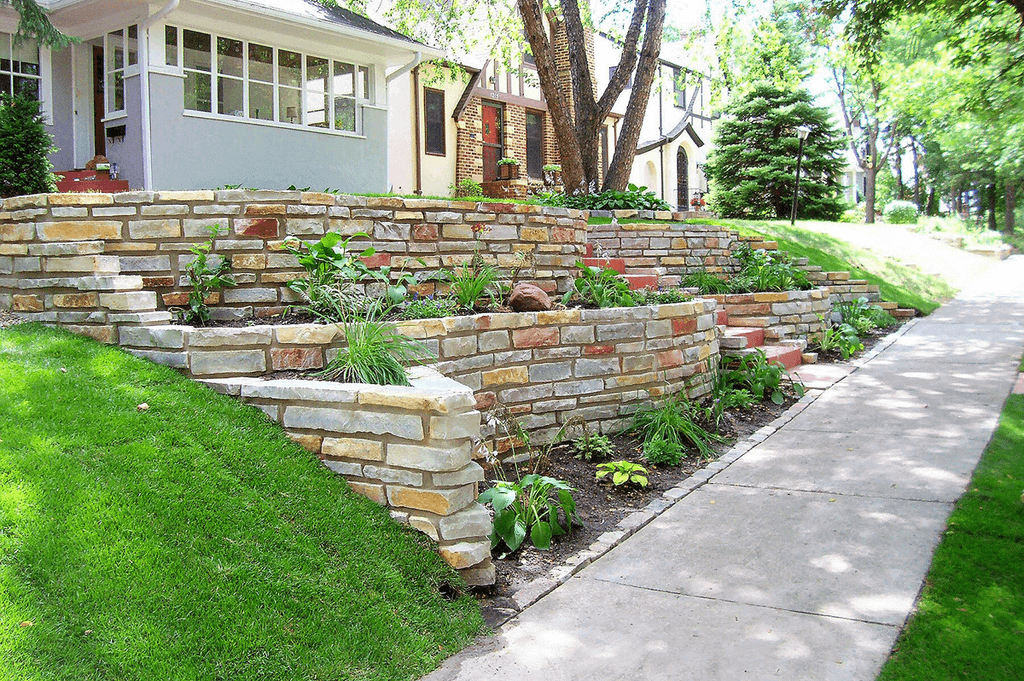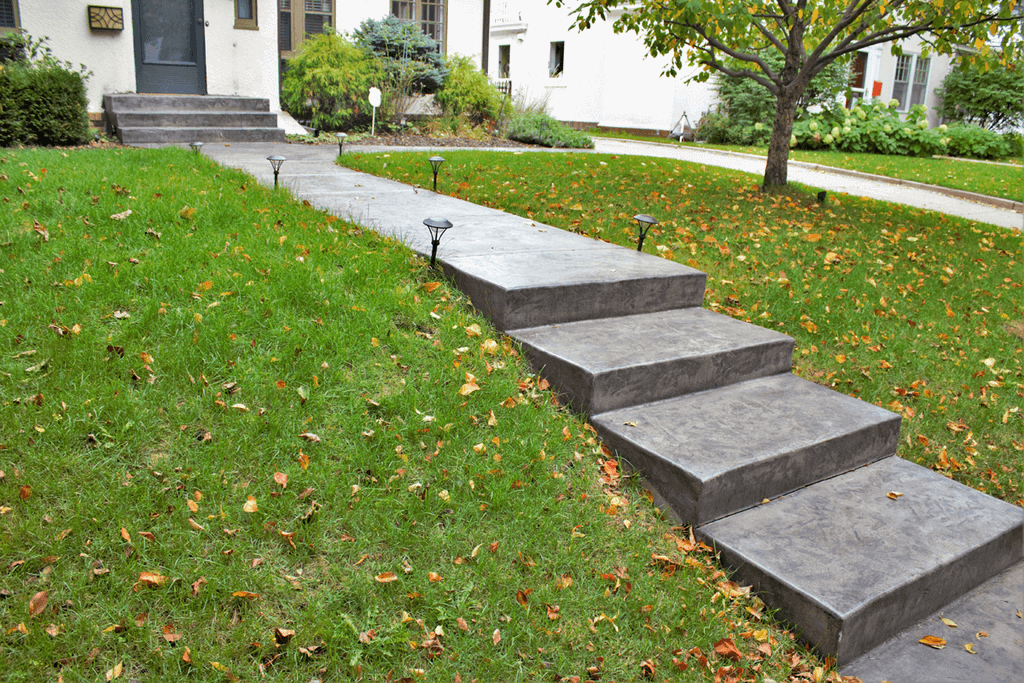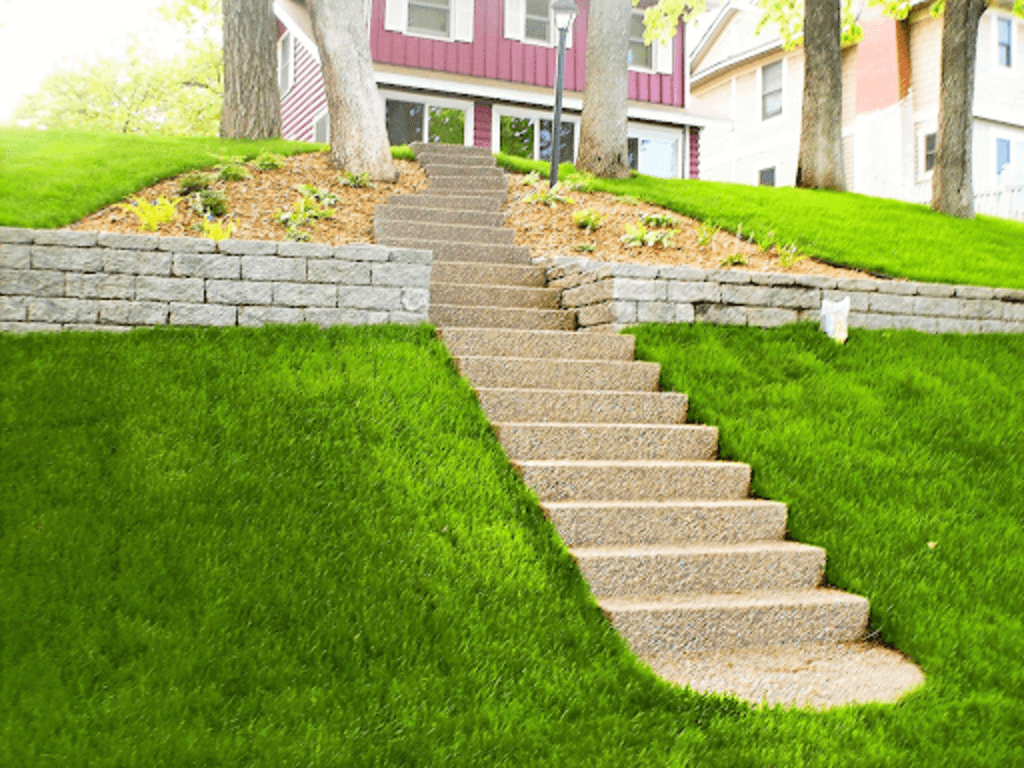Retaining walls are important in landscaping projects. They play an important role by bringing your outdoor space to life while serving a distinct functionality.
Having more structures in a space to create a focal point is a popular practice for professional landscapers, and retaining walls are almost always the first structures that come to their minds.
Retaining walls play roles such as creating a unique aesthetic for your project, making sloped areas functional, and increasing the amount of usable land besides serving a functional purpose.
They can also play an environmental role in your project by holding back the ground and preventing soil erosion.
If you are running out of ideas for your landscaping project, try implementing a retaining wall into your space. They can add a multitude of functionality and aesthetics to your project. Let’s get to know what these benefits and uses are.

1. Aesthetics
When landscapers take on new projects, improving the physical appeal of the property is always at the front of their minds. To create a highly-attractive feature for their clients, they must use the correct materials that will accent the property while making sure the wall will not be stressed by the load it is carrying.
Retaining walls are often constructed along driveways, parking lots, and corridors to properly define the space. Sometimes, landscape lighting and flowers are added to the retaining walls to create a stunning structure.

2. Improving Site Drainage
Landscaping projects and sites experience immense water-related problems. Landscaping professionals have to work on controlling the water around the site before it becomes a menace.
Flooding around the wall can jeopardize its structural integrity. This occurs when runoff water accumulates on the side of the wall and exerts hydrostatic pressure on it. When this occurs repeatedly, the wall may soon give in and collapse.
To mitigate the flooding and the eventuality of the wall collapsing, retaining walls can be built around the site and fitted with proper drainage systems. Examples of drainage systems that can be installed include weep holes which are small openings at the base of the wall that allows water to escape from the site. Drainage pipes can also be fixed to allow water to drain away along the length of the wall.
3. Prevention of Soil Erosion
Retaining walls can be used to prevent soil from being washed away from your property. The most affected areas are the exposed slopes on your property that are susceptible to rain and wind erosion.
Retaining walls deal with the soil erosion problem in various ways. Retention is one of the ways, notably so given the name of the structure; retaining walls. The walls hold back the soil that rests on the anchored wall. The other method is by proper drainage where runoff water is not allowed to interact with and wash away the soil. Retaining walls can also be used as raised terraces where shrubs and gardens are planted. The roots of these plants help hold the soil together.
4. Creating a Flat Surface
Flatland is almost always more useful than steeply sloping land. Landscapers help make sites more functional by making them relatively flat. Besides excavation, retaining walls are also used to achieve this.
A retaining wall allows the construction of structures that would have been impossible to construct on the subject property. If you have been keen enough, you have probably noticed that many parking lots, sports fields and stadiums are fitted with retaining walls.
5. Increasing Usable Space
A lot of space is normally wasted on sloped properties. Retaining walls allow your property to maximize the space available on your land, allowing for additional structures or spaces to be created.
Leveling off the land provides additional usable space that you can use for various purposes. Retaining walls can even be used to back-fill land, including derelict land, hence turning formally unusable land into usable land.
6. Making A Slope Useful
Sometimes landscaping projects are aimed at making a sloped property easier and less costly to work with and to maintain. Some types of properties or structures cannot be constructed on sloped land.
For example, commercial property parking lots require lots of flat space. These projects can be expansive and require the use of retaining walls to allow for complex excavation.
They are also used to create beautiful terraces which are a series of steps built within the slope of a hill. These are highly functional and low cost compared to excavating the entire slope.
Terraces also have many different customization options that your contractor can implement to leave you with a unique and eye-catching addition to your property.

7. Accessibility for the Physically Handicapped
Retaining walls are used in landscaping projects to provide accessibility for the physically handicapped by creating gently sloping ramps. It is easier for those who use wheelchairs to access buildings using these ramps, especially those constructed on sloped land.
It is a requirement in modern-day architecture for buildings to provide access points for the physically handicapped. Professional landscapers are conscious of this and use retaining walls to create these entry points.
Conclusion
Retaining walls have incredibly enormous roles to play in landscaping projects. Installing them can help reclaim derelict land and increase the value of certain classes of property such as those on sloped land.
A well constructed retaining wall can enhance the functionality, aesthetic value, and maintainability of property. If your property is underutilized or does not look as appealing as you would like it to be, retaining walls could just be the remedy you have been looking for.
Discover More

